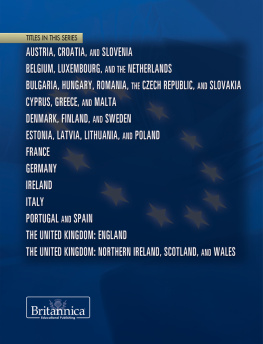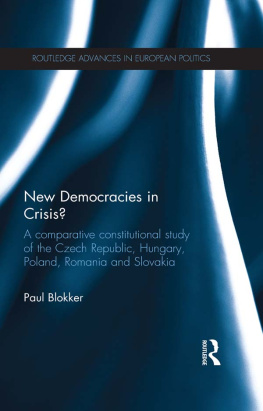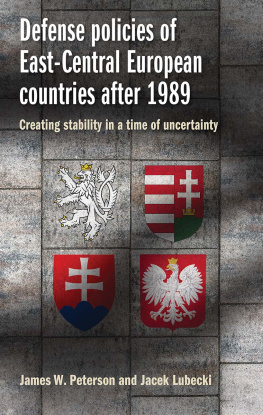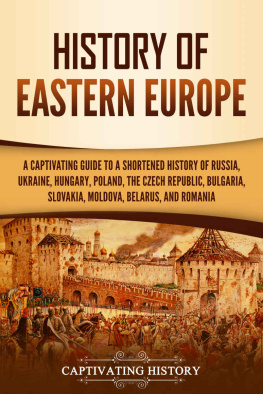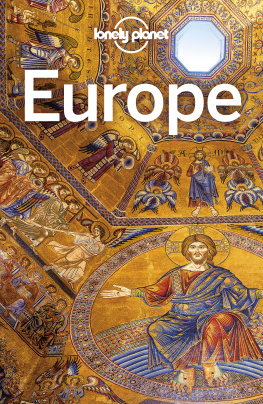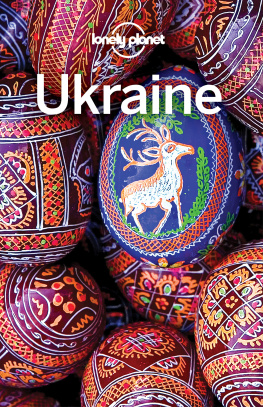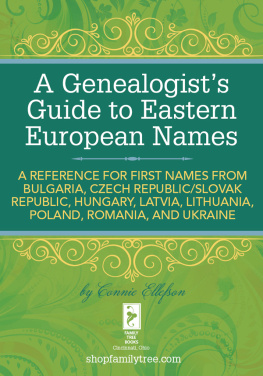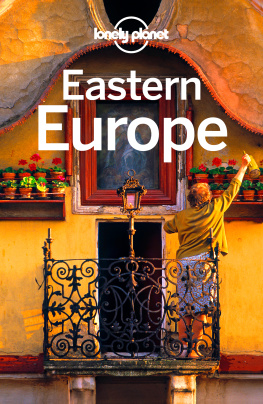

Published in 2014 by Britannica Educational Publishing
(a trademark of Encyclopdia Britannica, Inc.)
in association with Rosen Educational Services, LLC
29 East 21st Street, New York, NY 10010.
Copyright 2014 Encyclopdia Britannica, Inc. Britannica, Encyclopdia Britannica, and the Thistle logo are registered trademarks of Encyclopdia Britannica, Inc. All rights reserved.
Rosen Educational Services materials copyright 2014 Rosen Educational Services, LLC. All rights reserved.
Distributed exclusively by Rosen Educational Services.
For a listing of additional Britannica Educational Publishing titles, call toll free (800) 237-9932.
First Edition
Britannica Educational Publishing
J.E. Luebering: Director, Core Reference Group
Adam Augustyn: Assistant Manager, Core Reference Group
Marilyn L. Barton: Senior Coordinator, Production Control
Steven Bosco: Director, Editorial Technologies
Lisa S. Braucher: Senior Producer and Data Editor
Yvette Charboneau: Senior Copy Editor
Kathy Nakamura: Manager, Media Acquisition
Lorraine Murray: Editor, Geography
Rosen Educational Services
Jeanne Nagle: Senior Editor
Nelson S: Art Director
Cindy Reiman: Photography Manager
Brian Garvey: Designer, Cover Design
Introduction by Richard Barrington
Library of Congress Cataloging-in-Publication Data
Bulgaria, Hungary, Romania, the Czech Republic, and Slovakia/edited by Lorraine Murray.
pages cm.(The Britannica guide to countries of the European Union)
"In association with Britannica Educational Publishing, Rosen Educational Services."
Includes bibliographical references and index.
ISBN 978-1-61530-987-0 (eBook)
1. Europe, CentralEncyclopedias. I. Murray, Lorraine.
DAW1051.B85 2014
943.7003dc23
2013011132
On the cover p. iii: (map contour and stars), back cover, multiple interior pages (stars) iStockphoto.com/pop_jop; cover, multiple interior pages (background graphic) Mina De La O/Digital Vision/Getty Images
On page xiv: Map of Central Europe, showing the countries covered in this book: Bulgaria, Hungary, Romania, the Czech Republic, and Slovakia. PILart/Shutterstock.com
CONTENTS
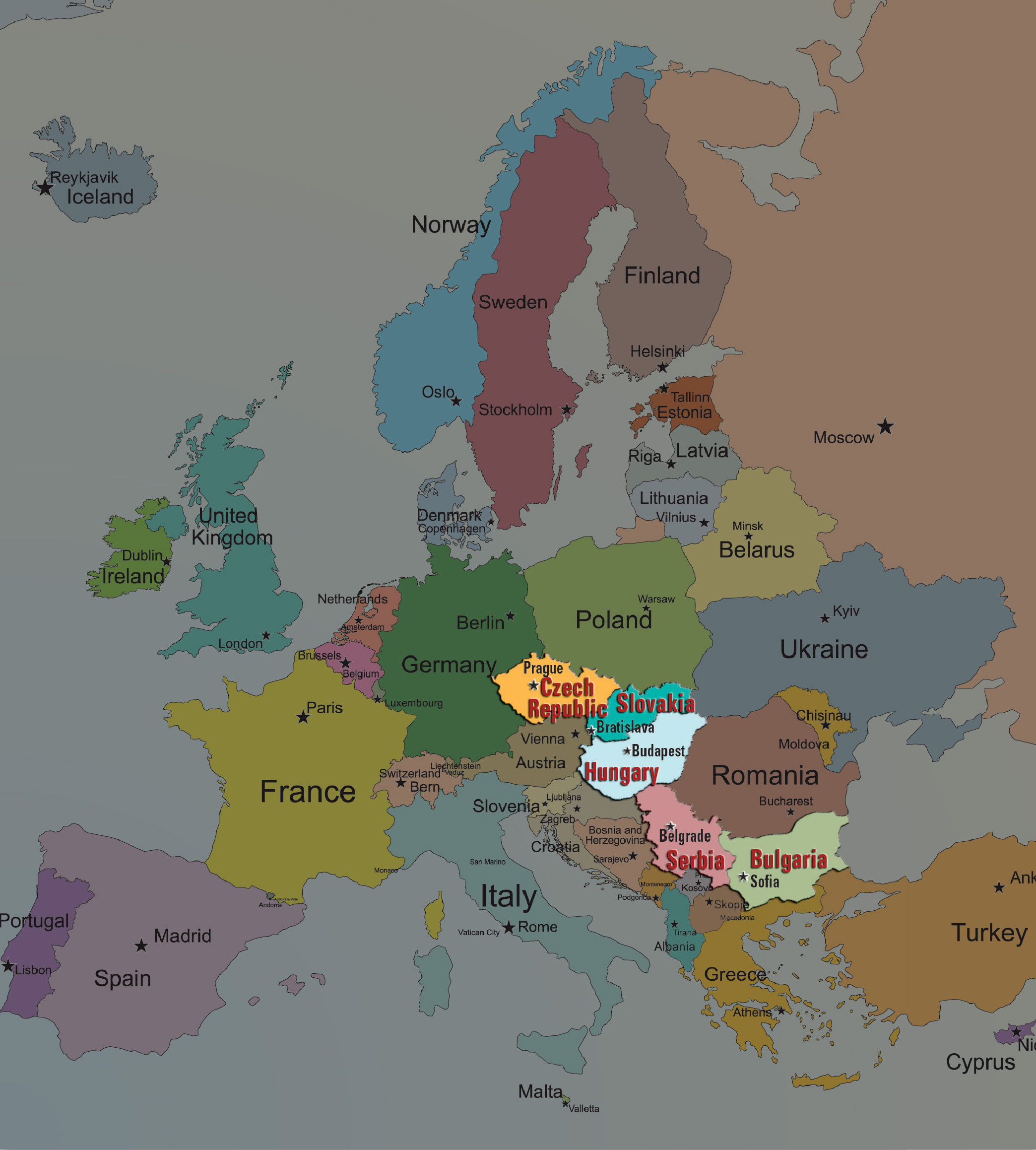
W hen one looks at a map, it can be tempting to assume the borders defining various countries have been in place forever. After all, the physical features of a mapthe mountains, rivers, and coastlinesdo not change much through the centuries. As for the question of countries as political entities, however, political affiliations and world events can alter their identities as well as their physical borders. Such has been the case in eastern Europe. This book takes a look at five countries in this regionBulgaria, Hungary, Romania, the Czech Republic, and Slovakiaexploring both what they are like today and how they have become what they are through the course of their histories.
Situated in the southeast portion of the Balkan Peninsula, with Turkey just to the south, Bulgaria lies on the historical route taken by travelers between Europe and Asia-be they invaders or simply traders. As a result, Bulgarias culture is a mix of Eastern and Western influences. The physical terrain also is varied, composed of everything from rugged mountains to tranquil beaches on the Black Sea.
Less varied is the demographic profile of Bulgaria. The great majority of the population consists of ethnic Bulgarians, and the majority of the people belong to the Bulgarian Orthodox Church, which practices an Eastern Orthodox form of Christianity. Since 1991, this population has been governed by a parliamentary system featuring a directly elected president and a prime minister elected by the National Assembly (parliament). This democratic state is the outcome of a long and often convoluted history that began with the Slavic invasions of the peninsula in the 6th and 7th centuries CE and the formation of a tribal confederation known as Great Bulgaria in the 7th century. The spread of Christianity to Bulgaria shortly thereafter helped foster institutions of learning and helped unite the Bulgars with the Slavs.
Bulgaria in its first centuries was far from a peaceful place. Conflicts with outsiders, especially the forces of the Byzantine Empire, weakened the country. Subsequent centuries would see invasions by Mongols and Serbs, but the conquerors who had the greatest lasting impact were the Ottoman Turks. At its peak, the Ottoman Empire had made significant inroads into Europe. Given its location just north of Turkey, Bulgaria was a prime target for conquest and usurpation. Bulgaria fell to the Ottoman Empire in the late 14th century and would remain under its control until late in the 19th century.
The country gained independence in 1878, but further troubles lay ahead. Continuing battles with the Ottoman Empire were followed by war against Greece and Serbia over disputed territories, and then came World War I, which Bulgaria entered as an ally of the eventual loser, Germany. The period between the world wars was marked by a series of coups and revolts in Bulgaria. The country's troubles continued throughout World War II, when Bulgaria once again chose to support what would prove to be the losing side, that of the Axis alliance.
The ultimate result of Bulgarias support of the Axis powers in World War II was its occupation by Soviet troops at the end of the war and the installation of communist rule soon afterward that lasted until the early 1990s. Though today a free and independent state that was granted membership in the European Union in 2007, Bulgaria has continued to struggle with both internal conflicts and disputes with neighbouring countries. In short, while a new era may have begun in Bulgaria, the country has not left its troubled history behind entirely.
Just as much of Bulgarias history has been determined by its proximity to Russia and Turkey, Hungarys location has played a significant role in its history, including a drastic reduction in territory following World War I. Hungary is much farther west than Bulgaria, bordering on Austria. Appropriately, given its physical closeness to the West, Hungary was one of the first countries in the eastern European communist bloc to implement market-based economic reforms, which date back to the late 1960s. This has culminated in a favourable business environment that attracts foreign investment and has nurtured a large number of entrepreneurial start-ups.
A common thread that runs through the history of many European countries is that of recurring struggles over royal succession. The Hungarian kingdom dates back to the 10th century, but by the 16th century disputes over this throne, in addition to invasion by the Ottoman Empire, threatened the countrys very existence. Hungary spent much of the 16th and 17th centuries split into three separate parts, with the largest part of its territory under foreign domination by the Ottoman Turks.
Another common theme in European history is the intertwining of royal lines from different countriesoften through marriage. This often took place for strategic purposes; that is, to form international alliances by means of uniting different royal families. It was in this way that the Habsburgs of Austria first gained a claim to the Hungarian throne in the 1520s. Once Hungary, at the end of the 17th century, regained its territory that was under Ottoman rule, the Habsburgs imposed German as the official language and made the country virtually a part of Austria. However, a combination of declining Austrian power and a rising spirit of nationalism within Hungary led to a series of revolts. This ultimately resulted in an 1867 compromise that created the dual monarchy of Austria-Hungary, under which the two countries shared one ruler.

